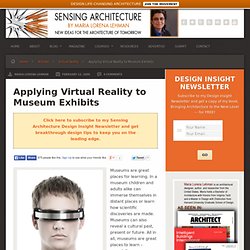

Media Technology and Museum Display: A Century of Accommodation and Conflict. Since the mid-1980s, electronic media have assumed an ever greater presence in museums of science, technology, natural history, and art.[1] For the most part, museum directors and curators have embraced new interactive technologies for their promise to democratize knowledge, to offer contextual information on exhibits, and to boost museum attendance.

Digital technologies have found a home in the modern museum in the forms of interactive touch-screen kiosks, CD-ROMs, computer games, large-screen installations and videowalls with multiple images, digital orientation centers, "smart badge" information systems, 3-D animation, virtual reality, and increasingly sophisticated museum web sites.[6] Such technologies have changed the physical character of the museum, frequently creating striking juxtapositions between nineteenth-century monumental architecture and the electronic glow of the twenty-first-century computer screen. International Cultural Heritage Informatics Meeting 2007: Paper: Reussner, E., et al., New Technologies for Learning in Museums: An Interdisciplinary Research Project.
Introduction In modern information and knowledge societies, knowledge acquisition is not limited to formal educational institutions such as schools or universities.

Information provision in the mass media, the internet and out-of-school environments such as museums and exhibitions play an increasingly important role for life-long learning. The contribution of museums to public education has repeatedly been emphasized in recent discussions about the need to raise the level of understanding of actual concepts, findings and methods of the sciences and the humanities in society and to increase the public’s engagement and involvement with scientific issues. These aims are labelled “Public Understanding of Science and Humanities”, “Public Understanding of Research”and “Science in Society” (Durant, 2001).
New York Hall of Science Home. Applying Virtual Reality to Museum Exhibits : Sensing Architecture by Maria Lorena Lehman. Image: Nejron | Dreamstime Museums are great places for learning.

In a museum children and adults alike can immerse themselves in distant places or learn how scientific discoveries are made. Museums can also reveal a cultural past, present or future. All in all, museums are great places to learn – especially as new technology helps designers to improve museum exhibit design. Museum exhibits are getting evermore technologically advanced and virtual reality is one of the latest trends. Online Learning and Webinars. App Smart - Apps as Guides to New York Museums.